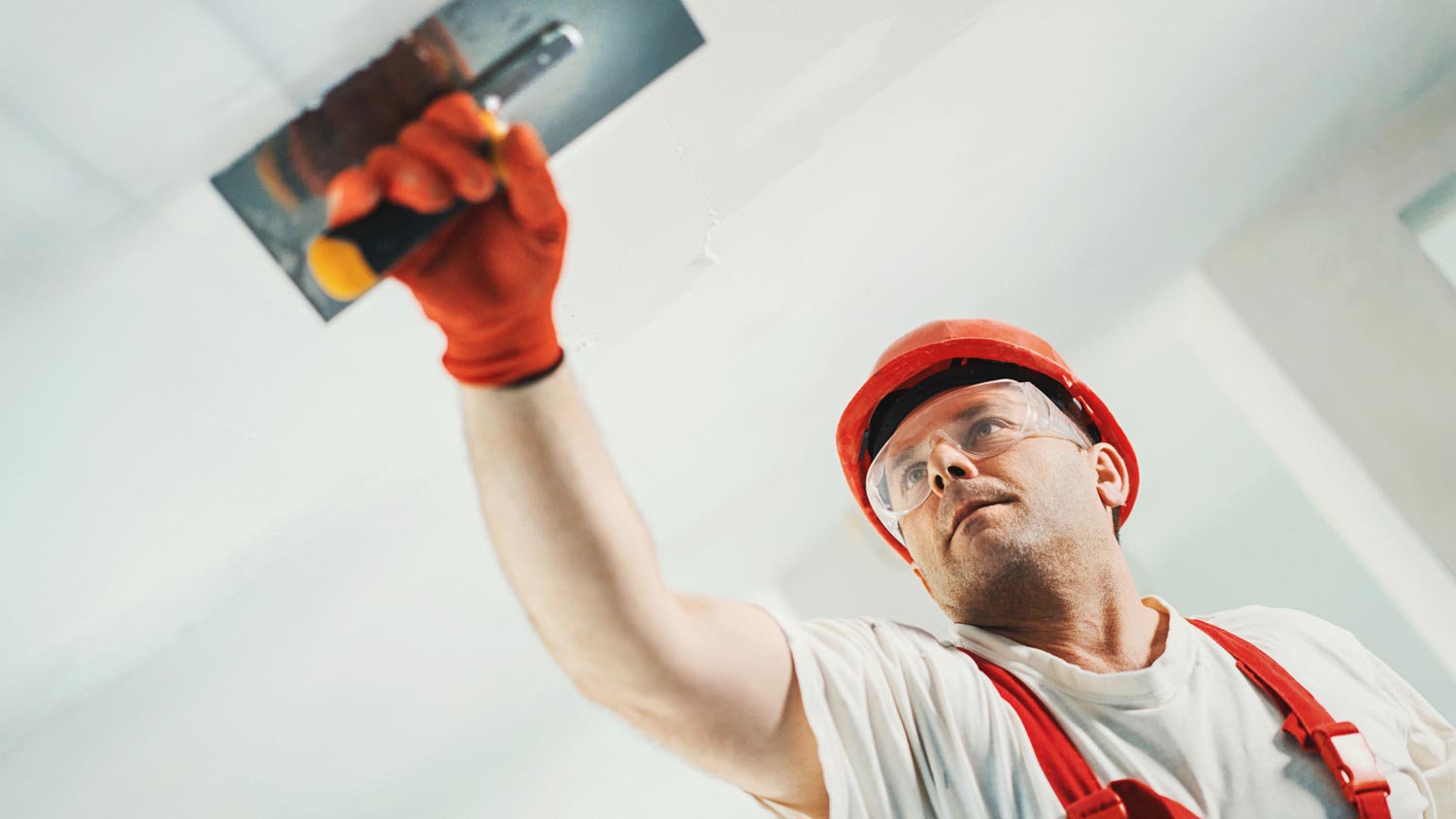
Skim coating drywall is a great alternative to replacement, and is often more affordable. Use this guide to estimate the cost to skim coat walls in your home.
Although it involves multiple steps, the result is worth the time investment


Perfect, straight drywall corners don’t make themselves—adding drywall corner bead is what cleans up the look resulting in nice, sharp corners. Although there is a way to square off drywall by overlapping it at a corner, the edges are brittle and it isn’t the best long-term choice.
Handy workers have the choice between metal bead or paper-face bead. Which one you use depends on your DIY skills and comfort with drywall tools.
The prep work is the same for both metal beads and paper-faced beads. You want to make sure any sharp edges on the drywall have been cut or sanded down. Double-check that the drywall is clean and ready to apply primer everywhere but the corner. By properly setting up the area, you’re ensuring it’s ready for the corner beads, saving you time in the long run.

Measure the drywall in its entirety. This will usually be from a sort of molding to the ceiling or, if your drywall runs the entire height of your wall, measure floor to ceiling. For both types of drywall beads, you’ll want to leave just a little space at each end, around one-half inch.
When you cut paper-faced beads, you can simply cut the paper. The process is physically easier than cutting metal beads, which you need to do with aviation snips. Make sure with either type that there are no sharp or rounded edges—the beads should be as straight on the ends as they are in the middle. Cutting corner beads is much easier than cutting drywall.
When it comes to attaching the beads, the method differs depending on which type of beads you choose. For paper-faced beads, apply a very thin layer of joint compound along the corner. Press the beads into the compound. They should adhere to the compound well, but add some staples just in case. Let it thoroughly dry before moving on to Step 3.
For metal beads, apply a thin compound as you did with the paper-faced beads. Press the metal beads against it firmly and, before it dries, use a hammer and small nails to secure it to the drywall. Nails are preferred to screws as screws tend to either raise above the beads or add small depressions if screwed in too tight. Wait for the compound to dry before moving on.

Only begin this step once everything is dry, which could be a few hours to overnight. Spread the joint compound over the beads using your putty scraper. You don’t need to be too clean, it’s the first layer and you’ll sand it down. Try to blend the compound into the drywall around the beads, spreading it evenly. While you don’t need to be exact, try not to spread it too thick as it will take much longer to dry. Let it completely dry before continuing.
Once the compound has dried, sand it down. You’ll want to do this with higher grit sandpaper, ideally around 150-200 grit, so you don’t take too much off at once. If you use low-grit (coarser) sandpaper, you run the risk of damaging the drywall around the bead.
Work from the corner and sand in a smooth motion while making sure you’re sanding enough to remove all unnecessary joint compound, but not so much that you’re exposing the bead.

The final step in the installation of drywall beads is to prime and paint the finished surface. Priming helps seal the joint compound and create an even surface for paint application, and if you’re painting the entire wall, you’ll have to prime that anyway. Once the primer has dried, paint the walls and, once it’s dry, enjoy your completed work.
If you’re comfortable using the tools this is a great DIY project, but drywalling is one of the least expensive contractor jobs. This is because it doesn’t take professionals long to do, and the materials are fairly inexpensive.
While a local drywall expert might cost between $50 and $100 an hour, adding corner beads won’t add much time to your bill if you are installing the beads along with a new wall. If you are just hanging the beads on existing corners, a DIY fix shouldn’t cost more than the materials (and tools if you don’t have them) and just a few hours of work.
From average costs to expert advice, get all the answers you need to get your job done.

Skim coating drywall is a great alternative to replacement, and is often more affordable. Use this guide to estimate the cost to skim coat walls in your home.

Drywall texture can create an attractive finish and add dimension to your home’s walls. This guide breaks down the factors that influence the cost to texture drywall.

Installing drywall is the most common way to finish your home’s interior. Use this drywall installation cost guide to see what your project is likely to cost.

Whether you want to spruce up a few dents and dings or fix a large surface area, investing in drywall repair costs can return your walls to a smooth, flush look.

How hard is it to hang drywall? It’s certainly not easy and there are potential pitfalls if you plan on going the DIY route. Read this guide for helpful tips.

Hanging drywall is only the beginning of creating smooth walls. We’ll show you the steps required for how to tape and mud drywall as the key finishing touch.